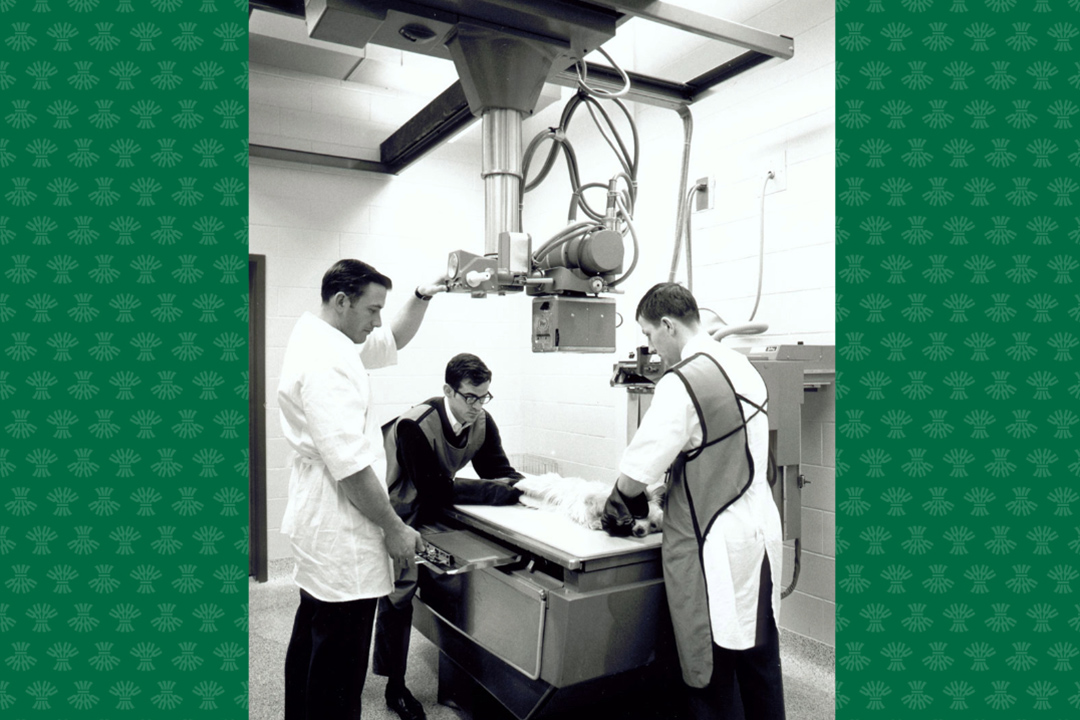
WCVM teaching hospital's humble roots
As Western Canada's new veterinary college came to life in the mid-1960s, a critical consideration was ensuring that future veterinary students had exposure to hands-on clinical experience with a diverse range of animals and cases.
By Lynne GunvilleIn 1964, WCVM Dean Dr. Larry Smith hired the college's first clinician — Dr. Otto Radostits, a 1959 graduate of the Ontario Veterinary College who grew up near Edmonton, Alta. Radostits set up temporary clinical services in the University of Saskatchewan's Veterinary Hygiene Building. Once a barn for livestock, workers hastily removed office partitions to return the building to its original role.
At that time, Saskatchewan was divided into veterinary service districts whose costs were subsidized by the provincial and municipal governments. The Saskatoon area included four districts with services provided by the Saskatoon Animal Hospital, which was owned by Drs. Gavin Hamilton and Fred Clark.
As members of the Saskatchewan Veterinary Medical Association's board, Hamilton and Clark had helped to attract the veterinary college to Saskatoon, so they agreed to sell their practice to the WCVM.
On May 1, 1965, Hamilton, Clark and Dr. Giesla Sear joined the WCVM's clinical staff, and the college officially began its veterinary practice. The Saskatoon Animal Hospital served small animal patients while Radostits worked with Dr. Bob Clugston to provide large animal services out of the Veterinary Hygiene Building.
In 1968 both clinics moved to the WCVM's newly constructed teaching hospital where veterinary students completed rotations in medicine, surgery, anesthesia, radiology and other clinical areas.
In the early days, large animal clinical services primarily involved field service, but during the 1970s, more people brought their animals to the clinics where veterinarians could use advanced diagnostic and therapeutic tools. The need for small animal services also grew as attitudes changed and families increasingly sought treatment for their pets.
By 1979, the WCVM Department of Veterinary Clinical Studies had grown to include 30 faculty members and 50 support staff. To meet growing demands, the teaching hospital was enlarged during the college's second-phase expansion that was completed in 1981.
Today the WCVM Veterinary Medical Centre (VMC) is a state-of-the-art facility that serves as a referral centre for veterinarians across Western Canada, providing emergency and critical care plus primary and specialized clinical services.
With files from WCVM: The First Decade and More by Christopher H. Bigland.
The WCVM is celebrating its 60th anniversary in 2025. Throughout the year, WCVM Today will post stories that highlight the WCVM's history as well as its people, programs and successes.
Visit the WCVM Turns 60 web page for more details about the college's 60th anniversary celebrations.
